- Home
- TV History
- Network Studios History
- Cameras
- Archives
- Viewseum
- About / Comments
Skip to content
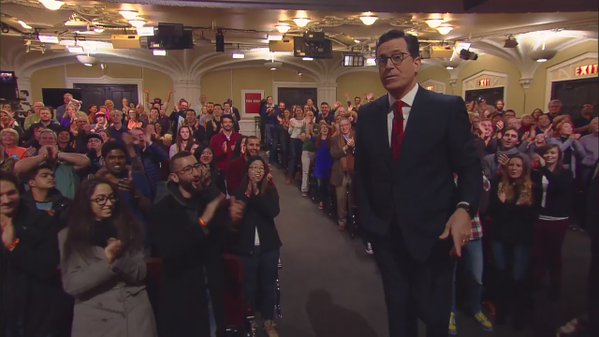
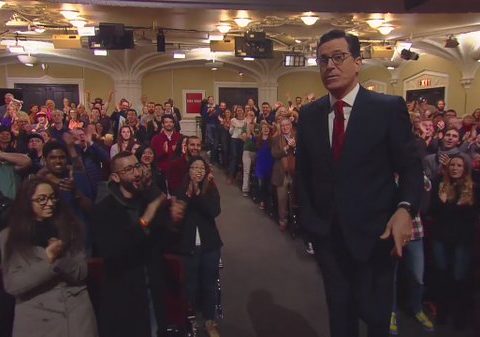


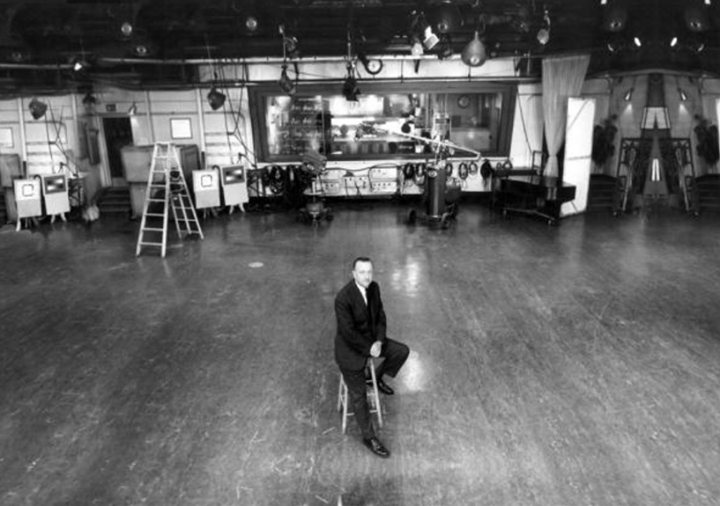
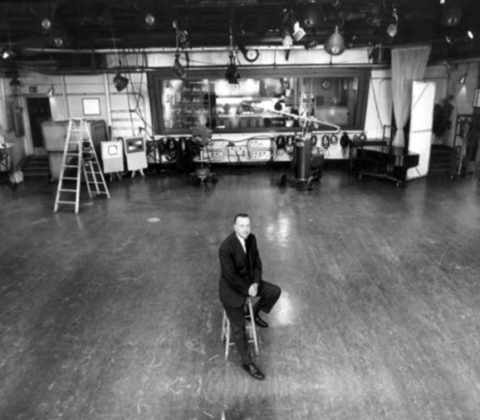
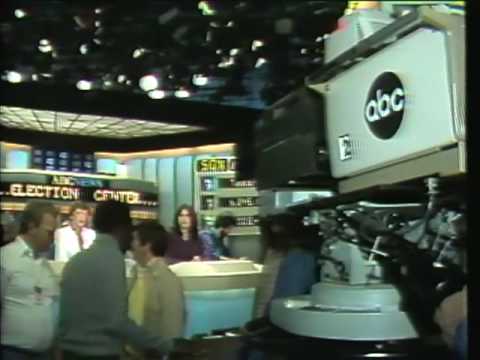
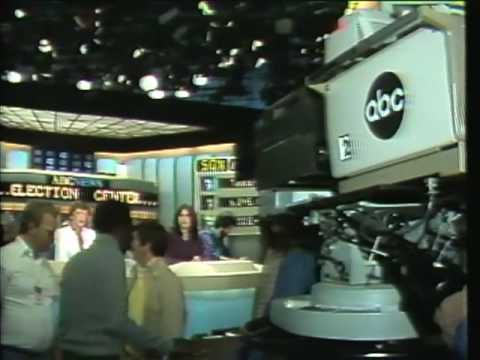


Source
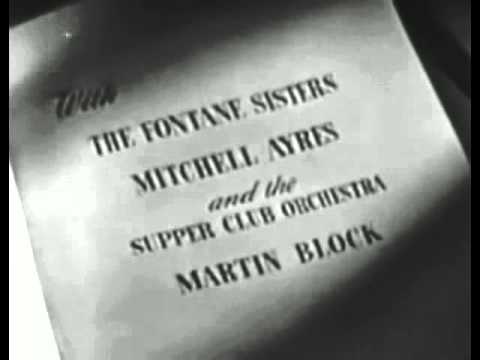
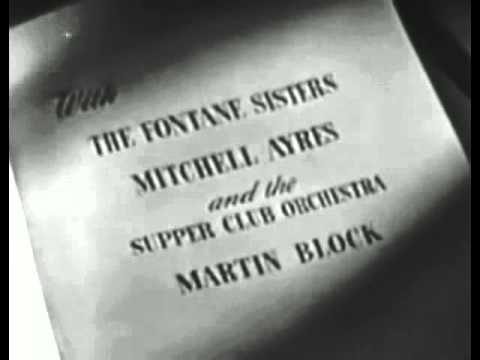
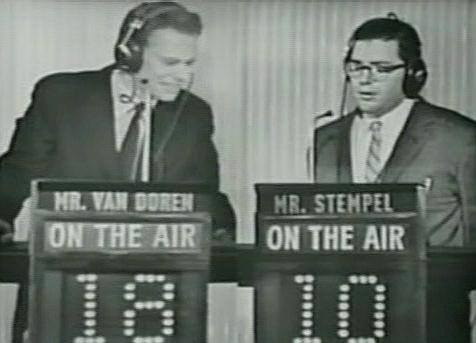


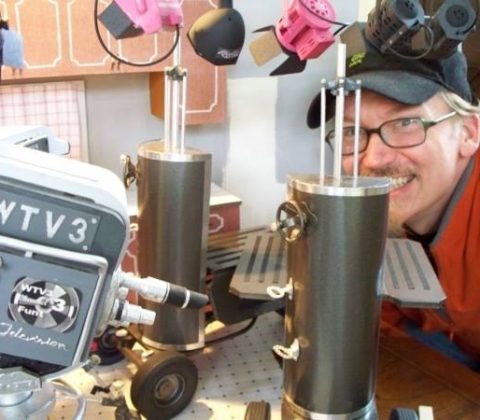
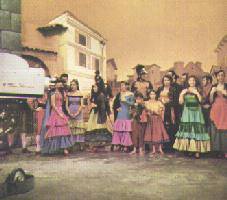

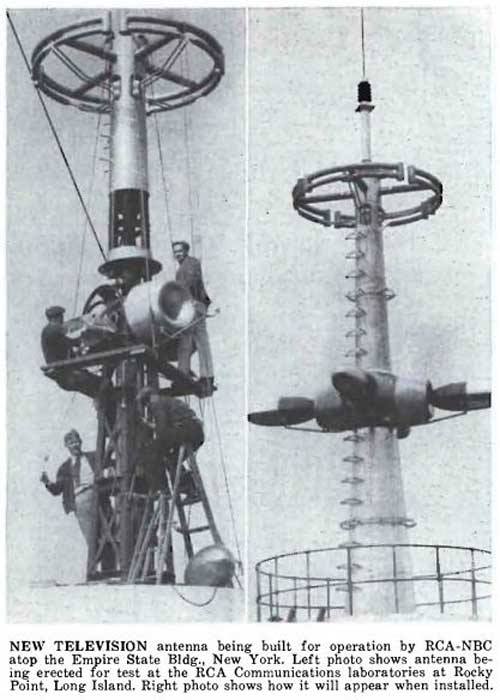


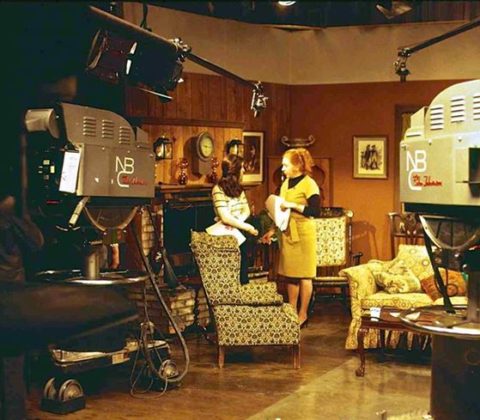


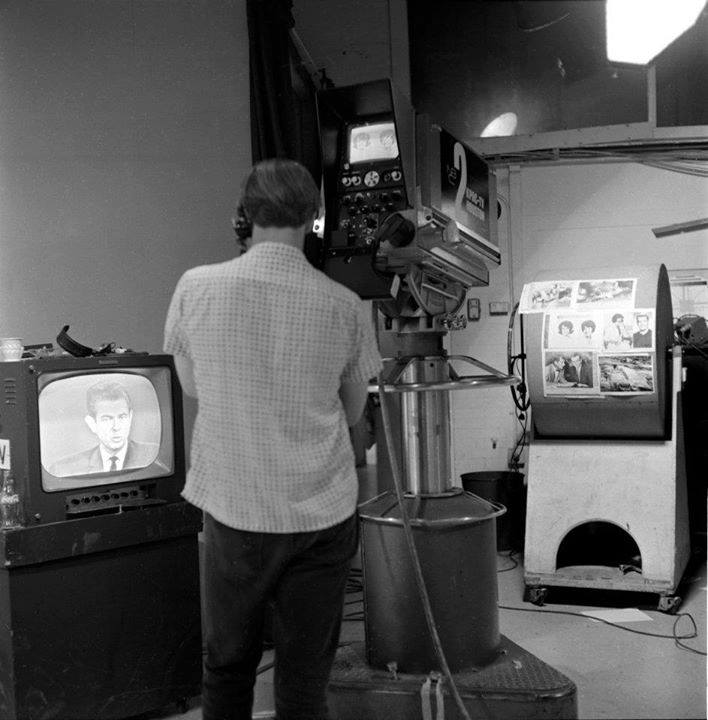
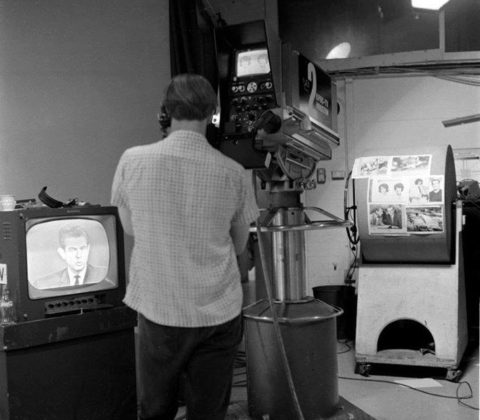
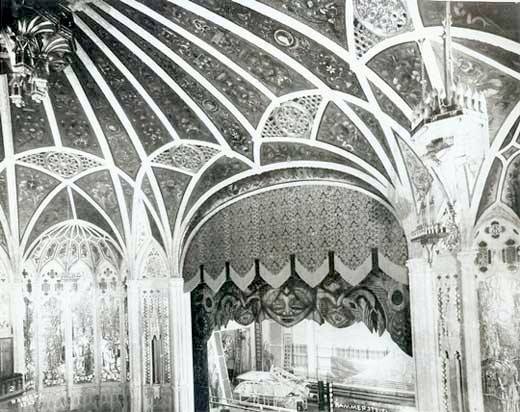
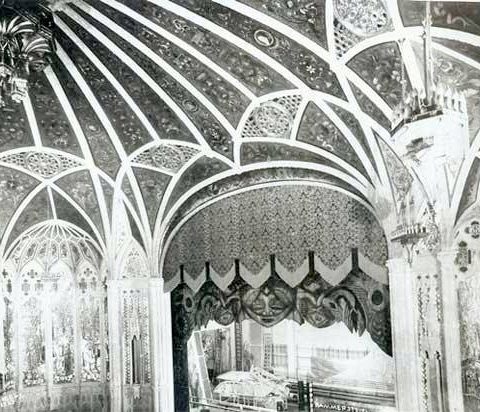
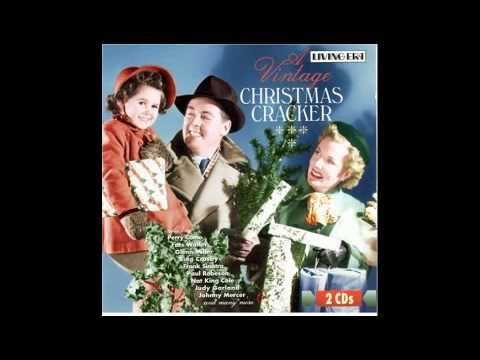
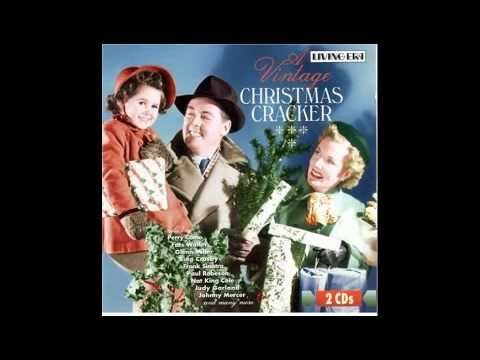
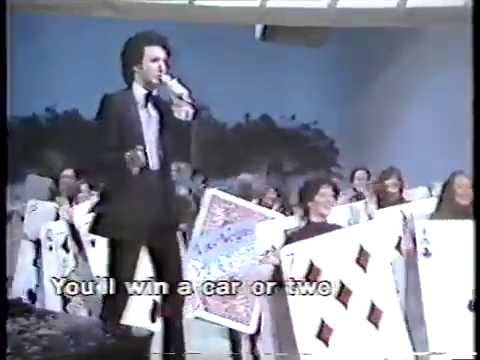

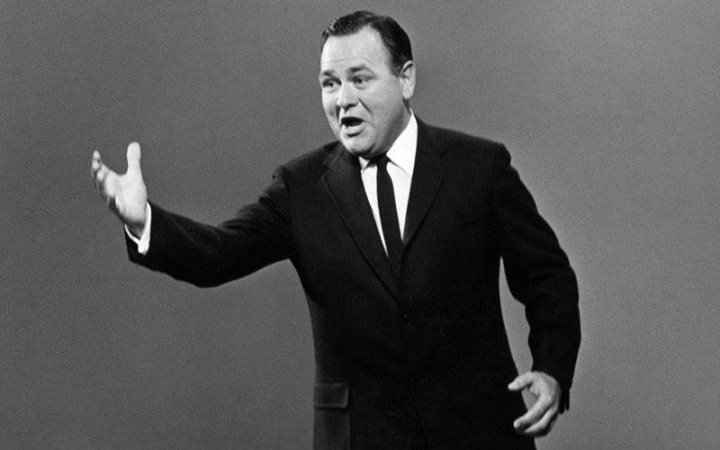



Posts in Category: TV History
Page 11 of 136
« Previous
1
2
3
4
5
6
7
8
9
10
11
12
13
14
15
16
17
18
19
20
21
22
23
24
25
26
27
28
29
30
31
32
33
34
35
36
37
38
39
40
41
42
43
44
45
46
47
48
49
50
51
52
53
54
55
56
57
58
59
60
61
62
63
64
65
66
67
68
69
70
71
72
73
74
75
76
77
78
79
80
81
82
83
84
85
86
87
88
89
90
91
92
93
94
95
96
97
98
99
100
101
102
103
104
105
106
107
108
109
110
111
112
113
114
115
116
117
118
119
120
121
122
123
124
125
126
127
128
129
130
131
132
133
134
135
136
Next » 

Happy Trails! Colbert’s Gentle Sendoff To John Meiklejohn……
On November 5, 2016
- TV History
Happy Trails! Colbert’s Gentle Sendoff To John Meiklejohn…
One of the best cameramen in the business retired last night, and Stephen gave his 11 year friend this send off. I’ve heard that as far back as 1966, they were telling JMJ stories.
This reminds me of the send off David Letterman gave to our friend, and CBS legend Dave Dorsett. Like Dave, I suspect John may be back from time to time to “fill in”. Happy Trails! -Bobby Ellerbee
https://twitter.com/colbertlateshow/status/793310612386254849


Inside The BBC’s Huge Studio 1…1974
On November 5, 2016
- TV History
Inside The BBC’s Huge Studio 1…1974
This is about as full a tour as you could ask for, as we are privy to every element, from the EMI 2001 cameras, to the control room and even a look at the BBC’s biggest crane in action. Thanks to Petter Olden of NRK TV in Norway for sharing this with us. -Bobby Ellerbee
https://www.youtube.com/watch?v=fJ3wYiNZJIQ
BBC
Source
Remembering Walter Cronkite…November 4, 1916 – July 17, 2009
On November 4, 2016
- TV History
Today, he would have been 100 years old.
“Whatever the cost of education, the price is cheap compared with an ignorant nation”. -Walter Cronkite
This is Mr. Cronkite in Studio 42 at the CBS Grand Central studios.


November 4, 1980…ABC Readies For Election Night, Behind The Scenes
On November 4, 2016
- TV History
November 4, 1980…ABC Readies For Election Night, Behind The Scenes
This WABC news clip from November 4, 1980 takes us behind the scenes at ABC’s TV 2 studio in New York as network coverage of the Carter, Reagan, Anderson presidential election nears.
As you may have read in yesterday’s Los Angeles Times article posted here, it was 40 years ago that NBC became the first to use the colorized maps in the 1976 election, and this was the first year ABC and CBS used them, but all were not on the same “color page”. It would take another 16 years for eveyone to agree on Blue for Democrats, and Red for Republicans. Voted yet? -Bobby Ellerbee
https://www.youtube.com/watch?v=smHM4Inl62I
Channel 7 Eyewitness News (WABC-TV) Political Correspondent Roger Sharp takes viewers behind the scenes of ABC’s 1980 Election Night coverage.
Source
HBO’s “Vice” News…Shout Out To Eyes Of A Generation
On November 4, 2016
- TV History
HBO’s “Vice” News…Shout Out To Eyes Of A Generation
On Wednesday night, this shot of this Facebook page showed up on the HBO nightly news program “Vice”, in a story on the difference between FB desktop and mobile users. This was shot over two weeks ago, since I have changed the headline photo to a color image since, but all the same, thanks to the “Vice” producers, and the man who brought the show to HBO, Bill Maher. Thanks to our friend Jeff Jaffares for sending the clip he captured on his phone. -Bobby Ellerbee
Source


Television’s 1st Prime Time Season; 1948…With My Detailed Notes
On November 3, 2016
- TV History
Television’s 1st Prime Time Season; 1948…With My Detailed Notes
This is just amazing…what you will see here are some of the first shows to run in the first real TV season, with all four networks in operation…NBC, CBS, ABC and Dumont. Back then, “networks” with live feeds, were basicly a handful of stations in the northeast, with outlying affiliates able to take shows via kinescope, which is how these clips survived. Oh, and the only network programming was from 7 – 10 PM.
Live network coverage was about to expand though, as an NBC VO announces at the start of this, that the midwest network links will be open and operating by Christmas, 1948.
“The Gay Nineties” show was on ABC on Wednesday nights from 8 – 8:30.
At 1:50 we see some of an early “Texaco Star Theater” with Milton Berle from NBC’s newly converted Studio 6B. This was the first show to come from 6B after it was converted from radio to television June 8, 1948. The woman with the great laugh is Milton’s mother who was at every show.
Just after that is “The Ed Wynn Show” which NBC did as a remote from The New Amsterdam, before it was converted in 1951.
At 3:32, “The Admiral Broadway Revue” was the first television show produced by Max Leibman, and starred Sid Caesar and Imogene Coca…this is the forerunner of “Your Show Of Shows”, and both were done at The International Theater at 5 Columbus Circle.
More rare footage starts at 4:44 with the intro of “The Fireball Fun For All” starring Olsen and Johnson. This ran one season, and was one of the first shows to come from CBS Studio 52. The assistant director is the legendary CBS director Ralph Levy in his second ever TV job. Levy went on to direct Jack Benny, Burns And Allen and the Lucy pilot. Levy’s first AD job was on the first show done at Studio 52, a summer show called “The 54th Street Revue” that ran eight weeks.
There’s more history at 6:10…”The Chesterfield Supper Club” starring Perry Como, was the first television show to broadcast from NBC Studio 6A. The studio was not converted officially till May 19, 1950. When this was shot, 6A was still a radio studio with a three camera remote unit and very few lights, which you notice here.
More history at 6:50! This is “The Fred Waring Show” from CBS Studio 41 at Grand Central, and this aired on Sunday night, just after “Toast Of The Town” with Ed Sullivan, which then came from Studio 51, The Maxine Elliott Theater.
Remember the opening announcement about the midwest network link up? “Your Show Time” had premiered on NBC’s East Coast stations in September 1948, and began to include NBC’s Midwest stations on January 21.
“Armchair Detective” was a Dumont show done at WABD.
At 9:06 notice the producer title…William Boyd. Boyd was Hopalong Cassidy, and a very smart showman! This show was an hour long and aired on NBC Friday nights at 8, starting in 1949.
“The Lone Ranger” debuted on ABC in September of 1949 and aired at 7:30 Wednesday nights.
Remember the Hungry Jack Biscuit commercials with the “Hungry…Hungry Jack” call? Here’s where it came from…the opening of “The Aldrich Family” at 10:23. This was on NBC at 7:30 Sundays.
At 10:55, one of television’s biggest shows appears…”The Goldbergs”, which was on CBS, and came from Studio 42 at Grand Central. This started in 1949, and aired Monday nights at 9:30.
Just after that is another huge CBS show, “Mama” which also started in 1949 and aired Friday nights at 8, against “Hopalong Cassidy” on NBC.
“The Ruggles” began on ABC, November 3, 1949 – a month after the radio hit “The Life of Riley” had moved to television on NBC, and interestingly, that is the next clip…but if you were expecting William Bendix as Riley, surprise…Riley is played by Jackie Gleason! This was his first starring role.
At 13:10 we see the open for “Suspense” which aired on CBS from ’49 till ’54. It was on Tuesday night opposite “The Life Of Riley”.
Finally, the last clip is from “Studio 1”. It was a big hit, and an important early anthology series on CBS, which debuted in September of 1948, and ran 10 seasons ending in 1958. Enjoy and share! -Bobby Ellerbee
#t=514″ target=”_blank”>https://www.youtube.com/watch?v=H6sOTBtcCcA #t=514
Some of the shows that began their run in 1948 and 1949.
Source
November 2, 1959…The Game Show Scandal Breaks Wide Open
On November 2, 2016
- TV History
November 2, 1959…The Game Show Scandal Breaks Wide Open
It was on this day in 1959 that Charles Van Doren admitted before a congressional committee that he had indeed received the answers to the questions on “Twenty One”.
Here is Herb Stempel discussing loosing to Charles Van Doren by missing the “Marty’ Question. For all of us that have seen the movie “Quiz Show”, you must admit that the movie was very accurate in it’s portrayal of this whole story.
One of the key players in the “Twenty One” story, was producer Dan Enright. At this link is a very interesting and detailed article on Enright’s part, his rise and fall, and his eventual return to television with the shows “Jokers Wild” and “Tic, Tac, Dough”.
http://www.pbs.org/wgbh/amex/quizshow/peopleevents/pande04.html
Actually, “Dotto” with host Jack Narz was the first show to be found rigged, and went off the air in August 1958. Narz was cleared of any wrong doing, but game shows were not, and over a three month period, all were canceled on every network, including “Twenty One”, which last aired October 16, 1958. -Bobby Ellerbee
You Won’t Believe Your Eyes! How To Make Miniature TV Studio…
On November 1, 2016
- TV History
You Won’t Believe Your Eyes! How To Make Miniature TV Studio
A few years back, our friend Jim Wickey made a beautiful, perfectly detailed studio for a real TV show. The RCA TK11 scale models are stunningly realistic, but are made of cardboard. Here are some shots of the finished product, and…his how to instructions. Enjoy! -Bobby Ellerbee
October 31, 1953 & 1965…Two Color Television Firsts!
On October 31, 2016
- TV History
October 31, 1953 & 1965…Two Color Television Firsts!
On October 31, 1953, NBC broadcast the first one hour color program to the full network. The production was a truncated version of the opera, “Carmen”. It was done from NBC/RCA’s only color facility, The Colonial Theater in New York.
At the time, the only color transmitter was an experimental model at WNBT in New York, but the goal was not measure how many people saw it in color…the goal was to measure how well the millions of monochrome sets received the “color compatible” signal.
The cameras used were the four RCA TK40 prototypes. The one hour presentation also included an audio trick or two. In passages where the vocal performance was critical, but extreme movement in dance numbers was too, look-alike actors were subtly inserted on stage to dance and lip synch while the principal operatic stars sang off stage. The principals would quietly return to stage and sing in more static shots.
On October 31, 1965, “The Ed Sullivan Show” debuted in color from its home at CBS Studio 50, with at least four new Norelco PC60s. On a few occasions before this, the show had been colorcast, but those were done from Television City, when the show was visiting the west coast.
18 months later, Studio 50 was re-equipped with Marconi Mark VII color cameras. Hallow Happyween! -Bobby Ellerbee
October 30, 1931…NBC Begins Work On Empire State Tower
On October 30, 2016
- TV History
October 30, 1931…NBC Begins Work On Empire State Tower
On this day in 1931, NBC began putting a TV transmitter and antenna on top of the Empire State Building. The first experimental TV broadcast from the building was on December 22, 1931.
As you can see in these photos, which were all taken before 1935, there was no tall mast on the building at the time…just kind of a rounded dome. The RCA tower was built on top of that.
RCA’s first experimental television transmissions began in 1928 on station W2XBS located near the Van Cortlandt Park area in the Bronx. Within a year it was moved to the New Amsterdam Theater Building, transmitting 60 line pictures in the new 2-3 mHz band allocated to television.
A 13 inch Felix the Cat figure made of paper mache was placed on a record player turntable and was broadcast using a mechanical scanning disk to a scanning disk receiver. The image received was only 2 inches tall, and the broadcasts lasted about 2 hours per day. By 1930 the station became part of NBC and began to transmit from NBC’s new home at 711 5th Avenue.
The Empire State Building was completed in May of 1931, and RCA leased the 85th floor for a studio and transmitter location for experimental television broadcasts. RCA, through its broadcasting division NBC, applied to the Federal Radio Commission on July 1, 1931 for construction permits for the sight and sound channels of a television station, which were issued on July 24, 1931.
The call sign W2XF was issued in December 1931 for the “sight” channel of that station on an assigned frequency of 44Mc. The RCA transmitter had an input power to the final stage of about 5Kw, giving an estimated power output to the antenna of about 2Kw.
The sound channel of the TV station was separately licensed as W2XK for a 2.5Kw transmitter to operate on 61Mc. Both transmitters were located on the 85th floor and used separate vertical dipole antennas.
In 1936, the tall tower like structure was added as a mooring mast for blimps. The winds proved to be too strong and there were several near accidents in mooring tests, but it did make for a great new antenna mount. -Bobby Ellerbee
EOAG Exclusive Photos…’The Doctors’, NBC Studio 3B
On October 29, 2016
- TV History
EOAG Exclusive Photos…’The Doctors’, NBC Studio 3B
Thanks to Bob Batsche, and Glenn Mack, we have these these rare color photos that they took on the set in 3B, and thanks to Chuck Snitchler, we have a shot of the slate from the first color episode which would air December 4, 1967, but was taped almost a month before.
On April 1, 1963, ‘The Doctors’ replaced Merv Griffin’s first daytime talk show in the 2:30 time slot, where it remained for nearly sixteen years. This is an extraordinary feat considering the competition, which included long-running favorites such as ‘House Party with Art Linkletter’ on CBS and ABC’s ‘Dating Game’. On occasion, it was also up against one of the longest-running soap operas in television history,’The Guiding Light’ on CBS.
In a move the proved fatal, NBC moved ‘The Doctors’ to 12 noon eastern on March 29, 1982. The show aired its final episode on December 31, 1982, some three months before it would have celebrated its 20th anniversary on NBC.
Frankly, I am stunned that NBC, or any network, would offer any programing at noon on a weekday in the 80s, as there was always a half hour of local news at noon. I have seen a mid 70s CBS daytime schedule that leaves open the 12 – 12:30 block for local programing. I wonder why NBC didn’t do that? Enjoy and share! -Bobby Ellerbee
How The Great Neumann U87 Is Made
On October 28, 2016
- TV History

How The Great Neumann U87 Is Made…
My favorite mic. Enjoy. -Bobby Ellerbee
https://www.youtube.com/watch?v=cvtjHhtxmpI
Interesting little clip about how a Neumann U87 microphone is manufactured. Pretty fiddly, with a ton of hand labor – no wonder they’re so freaking expensive!
Making Ribbon Microphones…The Detailed Process
On October 28, 2016
- TV History

Making Ribbon Microphones…The Detailed Process
As a tribute to the sound of the RCA 44, a Pasadena company is making a modern day version, and here is the fascinating process. Thanks to Barry Mitchell for the clip. -Bobby Ellerbee
https://www.youtube.com/watch?v=SHkOkqnJjy0
Here’s another excellent “How It’s Made” episode showing the assembly of an AEA ribbon microphone. This mic is almost $4000.
October 25, 1956…NBC’s “Camel New Caravan” Ends
On October 26, 2016
- TV History
October 25, 1956…NBC’s “Camel New Caravan” Ends
From February 16, 1949 until October 25, 1956, John Cameron Swayze hosted the 15 minute, week night NBC network news broadcast. The show was done from Studio C in the NBC Uptown Studios building on 106th Street, near Park Avenue.
In this photo from 1949, notice a few things. First, the exaggerated angles the cameras used to shoot him, early on. Second, notice the work-around pan heads on the pedestal cameras.
These are first generation pedestals, made for the RCA Iconoscope cameras that fed the camera cable inside the center column. The pan head for those Iconoscope cameras was not suitable for the much heavier RCA TK30s we see here, and the new friction heads and Mitchel style high hat mounts were not the same size as the column. That meant they had to weld a flat piece to the top to the column and attach these three leg mounts, until the new Houston Fearless TD 1 pedestals were put into Studio C.
This was the first NBC news program to use NBC filmed news stories rather than movie newsreels, which is why the NBC Television News Department was also located at the Uptown Studios. In December of 1948, NBC bought the 11 story studio building from Pathe, who had two huge film processing labs just next door. This was done with an eye toward using Pathe as a distribution partner in getting the NBC Kinescopes processed and shipped.
This live anchor news show, that aired at 7:45 weeknights, grew out of a show that started the year before. Launched on February 16, 1948, by NBC, “Camel Newsreel Theater” was a 10-minute program that featured Fox Movietone News newsreels, with John Cameron Swayze providing off camera voice-over for the series.
The following Monday evening, October 29, 1956, “The Camel News Caravan” was replaced by “The Huntley-Brinkley Report”. President Dwight D. Eisenhower had word passed to NBC’s White House correspondent that the president was displeased by the switch. Ike later grew to like Chet and David. -Bobby Ellerbee
Computers And Automation vs Manpower And Innovation
On October 25, 2016
- TV History
Computers And Automation vs Manpower And Innovation
This shot from Houston’s KPRC is a great example of how news graphics were done in the 50s and 60s. Some stations had a nice drum like this, but others had easels, or old music stands. The images were faxed in daily from either AP or UPI. The camera is a GE PC 12, but there is more here than meets the eye.
For the younger generation of broadcasters, this must look like a scene from another world. And, it was another world. Radio and TV stations were owned by individuals that lived in the cities they served, and owners were making money, but profits were not always the holy grail…talented people and skilled staffs were. Those people and their innovations in ideas differentiated stations in a way that has gone the way of this graphics drum, in our cookie cutter media world. -Bobby Ellerbee
The Original Beauty Of The Ed Sullivan Theater…Rare Images…
On October 25, 2016
- TV History
The Original Beauty Of The Ed Sullivan Theater…Rare Images From 1927
More of the history of the venue is in the original article below. Enjoy and share! -Bobby Ellerbee
Rare Ed Sullivan Theater Photos…1927
I love it that these rare photos are now pouring in! Take a look!
This is the theater as is looked when it was built. It opened in 1927 as The Hammerstein Theater and was designed by architect Herbert Krapp who designed about a dozen of NYC’s most famous theaters. Due to the depression, the theater closed in 1931.
It was taken over by Broadway Billy Rose and became a night club with all the theater seating removed and replaced by tables. In 1936, CBS took a long term lease on the building and converted it to CBS Radio Theater 3 (one of five in NYC). The first radio show from here was “The Major Bowes Amateur Hour”.
In early 1950, the theater was converted to television and became CBS Studio 50. The first broadcast was “Arthur Godfrey’s Talent Scouts” show. Godfrey’s talent show had been on CBS radio for over a year and originated here before the TV conversion. Thanks to Simon Crawshaw and Nick Van Hoogstratten for the rare photos. Enjoy and share! -Bobby Ellerbee


October 24, 1934…”Santa Clause Is Coming To Town”, Recorded
On October 24, 2016
- TV History
October 24, 1934…”Santa Clause Is Coming To Town”, Recorded
Until broadcast radio and talking pictures came along, there hadn’t really been any “popular” or secular Christmas songs…most were still traditional, religious carols.
The first recorded version of the song was by banjoist Harry Reser and his band, and was done on October 24, 1934 featuring Tom Stacks on vocals. In 1925, Reser found fame as the director for NBC’s Clicquot Club Eskimo Orchestra, continuing with that weekly half-hour until 1935. At the same time, he also led other bands, including Harry Reser and His Six Jumping Jacks, with vocals by Tom Stacks. They were the zany forerunners to comedy bands like Spike Jones and tune was right up Harry’s alley.
“Santa Claus Is Coming To Town”, was first heard live on Eddie Cantor’s NBC radio show in November 1934. It was said that Cantor agreed to introduce this new song (by songwriters J. Fred Coots and Haven Gillespie), because other well-known artists of the time had rejected as being “silly” and “childish.” Cantor liked it, and after the broadcast, the song had overnight orders for 100,000 copies of sheet music, and had sold 400,000 copies by Christmas of that year.
Here it the original version! Enjoy, and let me be the first to wish you a Merry Christmas! -Bobby Ellerbee
https://www.youtube.com/watch?v=kbePb9xNNII
By John Frederick Coots & Haven Gillespie. The first recording of this song. Oct. 24, 1934. New York. from A Vintage Christmas Cracker. Living Era CD AJS 275…
Source


October 24, 1980…Letterman Daytime Show Finale & Studio Tour
On October 24, 2016
- TV History
October 24, 1980…Letterman Daytime Show Finale & Studio Tour
Classic, Classy Letterman! Last day of his NBC morning show.
Although it only ran from June 23, until October 24, 1980, a lot of what would come later, in the late night years started here, including Stupid Pet Tricks.
From NBC Studio 6A, here is the last 15 minutes of the show, but the first 6 are spent touring the studio and meeting producer Barry Sand, announcer Bill Wendell, director Hal Gurnee, and more, and at the end, a full credit roll with names that are still familiar, like John Pinto, Bill Bonner and Jack Young. The cameras are RCA TK44s.
By the way, near the end, watch for the showgirls in the huge peacock head dresses….if you remember, those were used at the start of the “Late Night With David Letterman” debut show.
Enjoy and share! -Bobby Ellerbee
https://www.youtube.com/watch?v=_z7YGgn-x-0
October 24, 1980. Final Letterman Morning Show excerpts(pt 2 of 2) Live. w.”(Theme from)Las Vegas Gambit Show”( to Theme of David Letterman Show)
Source
October 23, 1956…Videotape Debut Network TV: Setting The Record Straight
On October 23, 2016
- TV History
October 23, 1956…Videotape Debut Network TV: Setting The Record Straight
Most people think the November 30, 1956 time delayed broadcast of “CBS News With Douglas Edwards” was the first use of videotape on network television. That is not correct, but it was the first use of tape as a time-shifter, in that the east coast broadcast was videotaped at Television City for rebroadcast two hours later to the mountain and west coast time zones.
As for the first known network use of videotape, that happened 60 years ago today at NBC. At the time, “The Jonathan Winters Show” was 4 weeks old. The 15 minute variety show ran from 7:30-7:45 Tuesday nights, just before “The Camel News Caravan” with John Cameron Swayze, replacing one of the two weekly Diana Shore shows that had for years, aired in that slot on Tuesday and Thursday nights.
On October 23, 1956, the NBC engineers in New York wanted to see if the viewing public could tell the difference between a videotape and the live portion of the show. Jonathan’s musical guest that night was Dorothy Collins, of “Your Hit Parade” fame. She had a new record out called “The Italian Theme” and her performance, with dancers and backup singers, was recorded earlier in the day. During the live show, Winters introduced her, as if she was there, and the tape rolled seamlessly. In case there was a problem, NBC had extra operators on duty that night in New York, and to their great relief and amazement, no one called or noticed. With that quiet event, videotape had passed the final acceptance test.
Remember, this is only six months after Ampex introduced videotape at the 1956 NAB in April. In the book “A Companion To American Technology”, Carroll Pursell reports that a month later, in November of ’56, Winters used videotape to play two characters in the same sketch. Unfortunately, there is no kinescope or tape of this historic event either, and about all that’s available from Jonathan’s 1956 show is this single program. Enjoy and share! -Bobby Ellerbee
October 22, 1939…The First Ever Pro Football Telecast
On October 22, 2016
- TV History
October 22, 1939…The First Ever Pro Football Telecast
77 years ago today, the relationship between professional football and television began when NBC earned a spot in history by televising a pro football game. Only 22 days before, NBC had televised the first ever college game on September 30th.
A crowd of 13,050 were on hand at Brooklyn’s Ebbets Field on that now-historic day when the Philadelphia Eagles fell to Brooklyn’s Dodgers 23-14. Yes, there was a Brooklyn Dodgers football team, from 1930 to 1943.
Five hundred-or-so fortunate New Yorkers who owned television sets witnessed the game in the comfort of their own homes, over NBC’s experimental station W2XBS. Many others saw the telecast on monitors while visiting the RCA Pavilion at the World’s Fair in New York where it was scheduled as a special event.
According to Allen “Skip” Walz, the NBC play-by-play announcer (pictured above), only eight people were needed for the telecast. Walz had none of the visual aids…monitors, screens or spotters used today, and there were just two cameras. One was located in the box seats on the 40-yard line and the other was in the stadium’s mezzanine section.
“I’d sit with my chin on the rail in the mezzanine, and the camera was over my shoulder,” remembered Walz. “I did my own spotting, and when the play moved up and down the field, on punts or kickoffs, I’d point to tell the cameraman what I’d be talking about.”
The television log records of that day say that the game began at 2:30 p.m. and ran for exactly two hours, thirty-three minutes. By comparison today’s games run almost three full hours. Of course there were no commercial interruptions during the 1939 game. There were, however, interruptions of another sort.
“It was a cloudy day, when the sun crept behind the stadium there wasn’t always enough light for the cameras,” according to Walz. “The picture would get darker and darker, and eventually it would go completely blank, and I would begin to call the game in the style I used for radio broadcasts.” Enjoy and Share! -Bobby Ellerbee
Page 11 of 136
« Previous
1
2
3
4
5
6
7
8
9
10
11
12
13
14
15
16
17
18
19
20
21
22
23
24
25
26
27
28
29
30
31
32
33
34
35
36
37
38
39
40
41
42
43
44
45
46
47
48
49
50
51
52
53
54
55
56
57
58
59
60
61
62
63
64
65
66
67
68
69
70
71
72
73
74
75
76
77
78
79
80
81
82
83
84
85
86
87
88
89
90
91
92
93
94
95
96
97
98
99
100
101
102
103
104
105
106
107
108
109
110
111
112
113
114
115
116
117
118
119
120
121
122
123
124
125
126
127
128
129
130
131
132
133
134
135
136
Next »